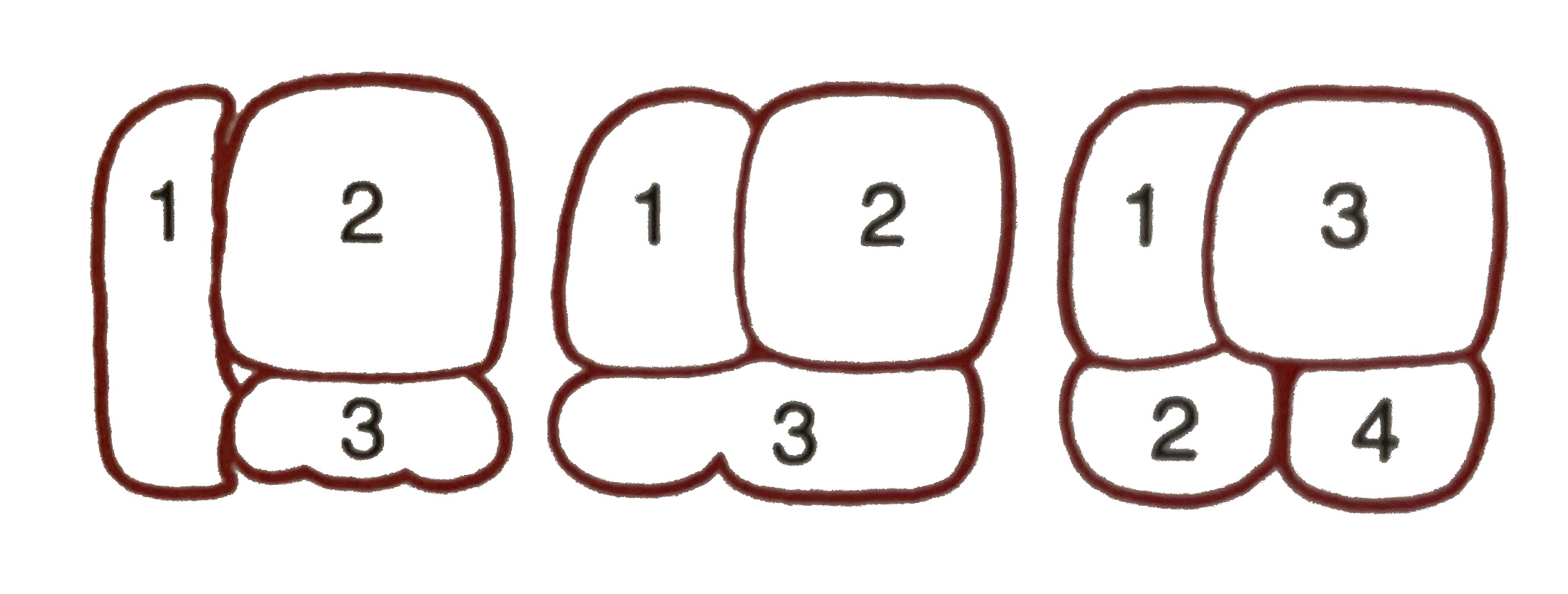Let us begin with a simplified version of the Mayan writing system. That is, we will encode English phonetically with the glyphs that represent sounds in Maya. We won’t have all the sounds, but oh-well!
Use the included syllabary to construct words from the associated sounds. Syllables in Maya are almost always Consonant Vowel (CV). The value of a glyph can be determined from its column (consonant) and row (vowel).
If you want to express a CVC syllable, like bat then encode ba-t(a). The vowel in parenthesis is silent. Also notice that the final vowel matches the preceding vowel. If you want the vowel before to be pronounced differently then make the final (still silent) vowel different from the preceding vowel. ba-t(i) will indicate something is different about the “a” so the reader might sound it like “bait”.
 1. ba-t(a) 2. ba-t(a) 3. ba-t(i)
1. ba-t(a) 2. ba-t(a) 3. ba-t(i)
Glyphs can be combined in blocks. Words should not share a block, though a word can take up multiple blocks. Generally there is a large pebble and then smaller longer pebbles around its sides. If you see a block with more than two glyphs, read it in the following orders.

Notes: While the rule of disharmony (eg. ba-t(a) vs ba-t(i)) is part of the classic Mayan language, there's still debate about the particulars. Often these vowels are pronounced longer. It is not the case that the sound would change, especially not to sound nonexistent in classic Mayan. Nevertheless, this convention gives us room to communicate the complexity of the preceding vowel to the reader.